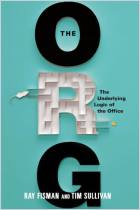Join getAbstract to access the summary!

Join getAbstract to access the summary!
Roger D. Hodge
First, Let’s Get Rid of All the Bosses
A radical experiment at Zappos to end the office workplace as we know it
New Republic, 2015
What's inside?
Managers can stay at Zappos – but only if they stop managing.
Recommendation
In 2015, Zappos CEO Tony Hsieh announced a radical measure: As part of the firm’s endeavor to become a “Holacractic” – that is management-less – organization, it would no longer have “people managers.” Staffers could embrace the self-management philosophy or leave. Roger D. Hodge, national editor at the online publication The Intercept, mingled among Zappos employees and presents their reactions to the announcement. He also explains Holacracy’s philosophy and guiding principles, as well as the character traits of the unconventional CEO who drove the decision to enforce self-management. getAbstract recommends this read to any manager curious about the pain and enthusiasm that accompanies radical change.
Summary
About the Author
Roger D. Hodge is the national editor at The Intercept and the author of The Mendacity of Hope.





















Comment on this summary